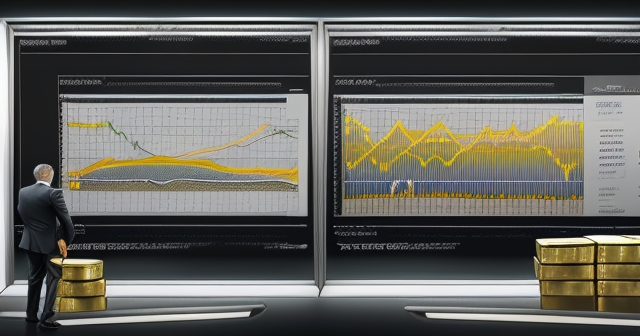Will Silver Outshine Gold in 2025? Unpacking the Ratio, Demand, and Expert Forecasts
Gold has captured the world’s attention with its impressive rally, scaling new heights and making headlines across financial markets. This surge has left its lesser-known counterpart, silver, trailing somewhat in the dust. As a result, the historic gold-silver ratio, which measures how many ounces of silver it takes to buy one ounce of gold, has stretched to levels rarely seen, hovering near or even exceeding 90:1 or 100:1 at times. This significant divergence between the two precious metals raises a compelling question for you as an investor: Is silver merely lagging, or is it setting the stage for a dramatic catch-up, potentially even outperforming gold in 2025?
Understanding the dynamics at play requires us to look beyond the recent price action and delve into the fundamental and technical forces shaping these unique markets. Gold and silver, while often grouped together as precious metals and safe havens, serve different roles and respond to different pressures. We’ll explore why gold has been so strong, why silver might be undervalued, what factors could propel silver forward, and the divided opinions among financial experts about the year ahead. Let’s embark on this journey to understand the complex relationship between gold and silver and assess silver’s potential to shine brighter in the near future.
Overall, the key points to understand include:
- Gold has served as a traditional safe haven asset amidst economic uncertainty.
- The gold-silver ratio has expanded significantly, suggesting silver could be undervalued.
- Industrial demand for silver, particularly from renewables and technology, is increasing.
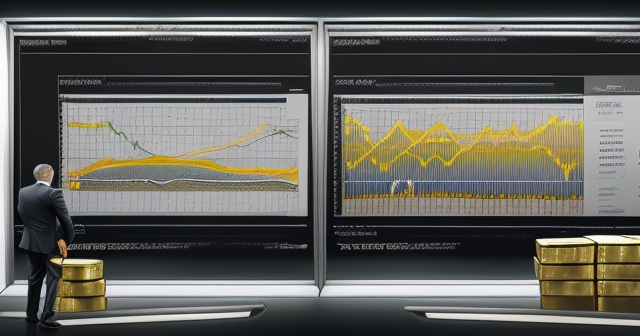
Gold’s Recent Dominance: Central Banks and Safe Haven Appeal
Before we assess silver’s potential to outperform, it’s crucial to understand what has been fueling gold’s remarkable run. Gold has cemented its position as the premier traditional safe haven asset, a role that becomes particularly attractive during times of economic uncertainty and geopolitical instability. Think of gold as the financial world’s tried-and-true emergency shelter – when storms gather, capital seeks refuge within its perceived safety.
A key driver behind gold’s sustained strength has been the aggressive and consistent buying by central banks globally. Nations like Russia and China, among others, have been accumulating significant reserves of gold, often seen as a strategic move to de-dollarize and strengthen their balance sheets in an unpredictable global environment. Unlike investment demand from individuals or institutions which can be more volatile, central bank buying represents a structural, long-term demand floor that provides robust support for the gold price at high levels. We see central banks as foundational buyers, providing a stable base that helps gold maintain its upward trajectory even when other demand sources fluctuate.
Macroeconomic factors have also been highly supportive of gold. Rising sovereign debt levels, particularly in the US, coupled with persistent inflationary concerns (even if receding slightly) and the potential for future interest rate cuts by central banks like the Federal Reserve, make non-yielding assets like gold more appealing compared to bonds offering negative real yields. Geopolitical tensions, including ongoing conflicts and shifts in global trade policies like the imposition of tariffs or discussions of reciprocal import fees, further amplify the need for safe havens. Gold thrives on anxiety and fluctuation in the broader financial landscape, making it the first choice for many looking to de-risk their portfolios amidst turmoil.
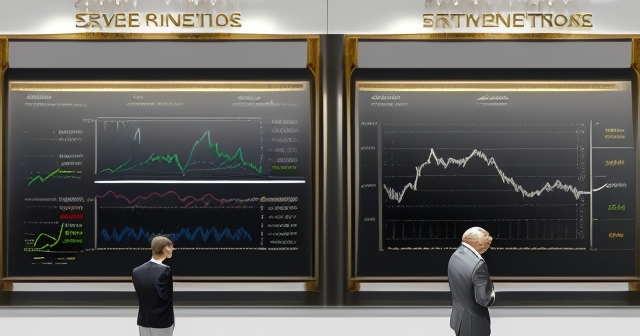
The Gold-Silver Ratio: A Historical Perspective and Current Anomaly
One of the most compelling arguments for silver’s potential outperformance in 2025 centers on the gold-silver ratio. This ratio isn’t just a random number; historically, it has fluctuated significantly but often within a certain range. For centuries, the ratio remained relatively stable, reflecting the natural abundance of silver versus gold in the Earth’s crust (estimated around 15-17:1). While market prices haven’t mirrored this natural ratio precisely for a long time, the historical trading range in modern times has often been between 40:1 and 80:1.
Currently, the ratio sits far above this historical norm, lingering in the 90:1 to 102:1 territory. What does this elevated ratio tell us? For many analysts and investors, it suggests that silver is significantly undervalued relative to gold. It’s like comparing two stocks in the same sector, where one (gold) has surged to record highs while the other (silver) is trading well below its previous peak, despite both potentially benefiting from similar macro trends. This stretched ratio is often seen as a coiled spring, historically tending to revert towards its mean.
When the ratio is high, it implies silver is cheap compared to gold. When the ratio is low, silver is expensive. A move back towards the historical average, even just to 70:1 or 60:1, would necessitate a much larger percentage gain in the price of silver compared to gold (or a significant drop in gold, which seems less likely given current drivers). Therefore, the current high ratio is a key technical and fundamental indicator cited by those who believe silver is due for a significant upward correction relative to gold. It represents a potential entry point for investors betting on a normalization of the relationship between the two metals.
| Year | Gold-Silver Ratio | Price of Silver |
|---|---|---|
| 2000 | 60:1 | $5/oz |
| 2010 | 56:1 | $18/oz |
| 2020 | 85:1 | $24/oz |
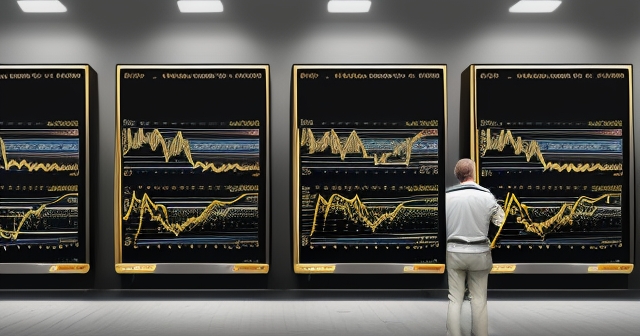
The Silver Bull Case: Industrial Demand as a Game Changer (Solar, EVs)
While gold’s demand is dominated by investment and jewelry, silver has a dual nature: it’s both a monetary metal and a critical industrial commodity. And it’s the industrial side where the most exciting growth potential for silver currently lies, fundamentally changing its market dynamics compared to historical cycles. Experts like Eric Sprott, Phil Baker (President of Hecla Mining), and others point to surging industrial demand as a primary driver for silver’s future price increases, potentially allowing it to outpace gold.
The energy transition is a massive tailwind for silver. Solar panels, in particular, are becoming a dominant source of annual silver demand, currently accounting for an estimated 29% of total demand. As the world accelerates its shift towards renewable energy, the production of solar photovoltaic (PV) panels is booming, and silver is an indispensable component due to its unparalleled conductivity. This demand is not speculative; it is tied to concrete manufacturing requirements that are projected to grow significantly.
Beyond solar, electric vehicles (EVs) and high-end electronics are also increasing their consumption of silver. EVs, while not consuming as much silver per unit as solar panels, use more silver than traditional internal combustion engine vehicles, particularly in advanced electronics and battery systems (even potentially in next-generation solid-state batteries). The proliferation of complex electronics in everyday devices further adds to this industrial pull. This robust and growing industrial base means silver demand is becoming less solely reliant on investor sentiment and more tied to essential global manufacturing trends, providing a strong fundamental floor and potential for consistent growth.
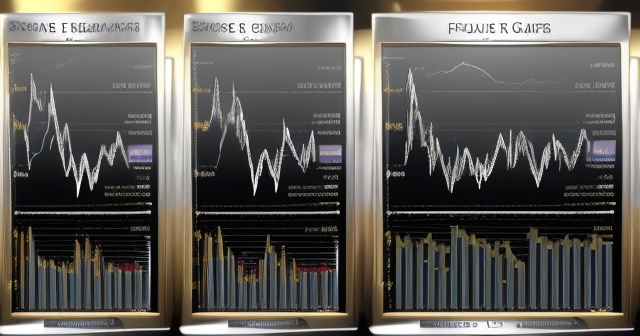
The Silver Bull Case: Retail Resurgence and Technical Signals
Beyond industrial demand, other factors contribute to the bullish outlook for silver outperformance. One significant element is the potential for a resurgence in retail investor interest. With gold trading at record highs approaching or exceeding $2700 per ounce, buying a full ounce of physical gold can be prohibitively expensive for many individual investors. Silver, trading around $30 per ounce, offers a much lower entry point per unit, making it more accessible for those looking to acquire physical metal or invest in silver ETFs.
Historically, retail investors have shown a strong affinity for silver, sometimes driven by narratives around its undervaluation and potential for explosive gains (sometimes fueled by claims of market manipulation, which we will discuss later). A return of strong retail buying could add considerable upward pressure on silver’s price. We’ve seen hints of this in rising ETF demand and discussions on online forums, suggesting a renewed interest in the “poor man’s gold.”
From a technical analysis perspective, many chartists see silver’s price action setting up for a potential breakout. While gold has blasted through previous resistance levels, silver has consolidated below key historical resistance zones, often around the $30 level. Technical analysts like Michael Oliver, who uses momentum-based analysis, have pointed to specific chart patterns suggesting silver is coiled and ready for a significant move upward once it decisively breaks above this resistance. The argument is that after years of underperformance and price suppression (whether due to fundamentals or manipulation), silver’s technical setup indicates pent-up energy for a powerful rally, potentially outperforming gold on a percentage basis from current levels, similar to past moves after testing resistance.
The Bear/Neutral Case: Gold’s Enduring Strengths and Market Competition
While the arguments for silver outperformance are compelling, it’s essential to consider the counterpoints and potential headwinds. Not everyone is convinced silver will definitively outshine gold in 2025. Some experts believe gold’s structural advantages will continue to keep it in the lead, or that silver may only keep pace rather than accelerate ahead.
Gold’s primary strength remains its unchallenged status as the ultimate safe haven and monetary asset. As long as global uncertainty persists, central banks are buying, and traditional financial assets face questions (like the long-term value of sovereign debt), gold will likely maintain its strong demand base. Central bank buying, in particular, provides a level of price support that silver simply doesn’t have to the same degree. We see gold as having a more stable, institutionally-backed floor compared to silver.
Furthermore, while industrial demand for silver is growing, it’s not immune to economic cycles. A significant global recession, for example, could dampen demand for solar installations, EVs, or electronics, negatively impacting silver’s industrial base. Some analysts point to potential slowdowns in specific markets, like concerns about oversupply in certain segments of the Chinese solar market, which could temporarily temper demand growth.
Another factor is the evolving landscape of alternative assets. Bitcoin and other cryptocurrencies have emerged as potential competitors for investment dollars, particularly from retail investors seeking assets outside the traditional financial system or hoping for large percentage gains. While debate exists about whether Bitcoin is a true safe haven or merely a speculative asset, its significant price movements can distract from or divert capital that might otherwise flow into precious metals, potentially impacting silver’s retail demand more than gold’s institutional demand.
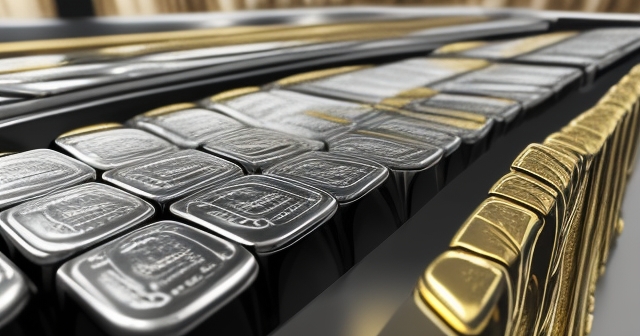
Silver’s Supply Constraints and Persistent Manipulation Allegations
Adding complexity to the silver market are its unique supply dynamics and long-standing claims of market manipulation. Unlike gold, which is primarily mined for its own sake, roughly 70-80% of annual silver supply comes as a by-product of mining other metals, mainly copper, gold, zinc, and nickel. This characteristic means that silver supply is relatively inelastic; its production levels are more dependent on the economics and output of base metal mining than on the price of silver itself. Even if the silver price skyrockets, miners won’t necessarily increase silver production unless the primary metal they are targeting also justifies the increased activity. This supply constraint creates the potential for structural deficits where demand outstrips supply, a situation the silver market has reportedly been in for several years, according to various industry reports. A persistent deficit naturally puts upward pressure on price.
The silver market is also subject to persistent and vocal allegations of price manipulation, primarily centered around large short positions held by major banks on exchanges like COMEX. Proponents of this view, such as those frequently interviewed on platforms like Liberty and Finance (including individuals like Mike Maloney or Peter Grandich), argue that these large paper positions suppress the price of physical silver below its true market value. The argument is that as the physical market tightens due to structural deficits and increasing demand, it becomes harder and more expensive for large entities to maintain these short positions. A significant price rally, potentially triggered by strong physical demand or a shift in market sentiment, could force a “short squeeze,” leading to a rapid and dramatic price increase as shorts are covered. While concrete proof of illegal manipulation is hard to come by and hotly debated, the *perception* of manipulation and the dynamics of large exchange short positions remain significant factors influencing sentiment and potential volatility in the silver market.
Macroeconomic Forces: Debt, Tariffs, and Geopolitical Uncertainty
Both gold and silver operate within a complex global macroeconomic environment, which provides a backdrop supportive of higher precious metal prices. As we discussed, mounting US debt is a significant concern for many investors. The sheer volume of Treasuries being issued raises questions about future inflation and the long-term stability of the currency, driving demand for hard assets.
Geopolitical uncertainty remains elevated. Ongoing military conflicts, trade disputes (including the imposition of tariffs and discussions around reciprocal fees, which could impact global supply chains and economic growth), and shifts in foreign policy all contribute to a climate of anxiety. In such times, investors naturally seek havens outside the traditional financial system, benefiting both gold and silver.
Policy decisions by central banks, particularly the Federal Reserve’s path on interest rates, also play a crucial role. While higher rates can make yielding assets more attractive than precious metals, expectations of future rate cuts (as inflation moderates or recession risks rise) tend to be supportive of gold and silver prices. The overall narrative of a debt-ridden global economy facing numerous uncertainties, from trade wars to potential recessions, provides a compelling case for allocating capital to precious metals as a form of insurance and wealth preservation.
| Expert Predictions | Gold Price Targets | Silver Price Targets |
|---|---|---|
| Various Analysts | $3000 – $4500 | $38 – $60+ |
| Mike Maloney | Target at $4000 | Potential to exceed $200 |
| Phil Baker | Estimate $3700 | Possibility of $60+ by 2026 |
Expert Price Forecasts: Where Could Prices Head?
Given these diverse factors, what are the experts predicting for gold and silver prices in 2025? Forecasts vary, reflecting the complexity and differing interpretations of market dynamics, but many point towards higher prices for both metals, with significant potential upside for silver if the ‘outperformance’ scenario plays out.
For gold, price targets for 2025 and beyond range from $3000 per ounce to $3700, $4000, or even $4500+ in the coming year(s). These targets are based on continued central bank buying, strong safe-haven demand, and macroeconomic tailwinds.
For silver, the predictions are even more dramatic in percentage terms, precisely because it is starting from a much lower price point relative to its all-time high and gold. Some experts see silver reaching $38 per ounce relatively soon. Others, factoring in the potential for a ratio correction and structural deficits, forecast prices well above $50, potentially reaching $60, $70, or even higher in 2025 or 2026. Mike Maloney, among others, has highlighted that if silver were merely to return to its historical 15:1 ratio with current gold prices (which he sees as a potential long-term target under certain extreme circumstances), the price could theoretically exceed $200 per ounce. While such extreme predictions depend on a drastic ratio collapse, even a partial return towards a more historical ratio implies massive upside potential for silver compared to gold.
It’s important to remember that these are forecasts, not guarantees. However, the range of projections, particularly for silver, underscores the belief among a significant cohort of analysts that silver’s current price is undervalued and poised for substantial gains.
Volatility and Investment Considerations: Navigating the Path Ahead
As you consider investing in gold and silver, it’s vital to understand their differing risk profiles. While both are often seen as safe havens, silver is known for its significantly higher volatility compared to gold. Think of gold as a steady ship navigating choppy waters, while silver is more like a speedboat – capable of much faster movement and larger percentage gains, but also subject to bumpier rides and sharper pullbacks. This higher volatility is partly due to silver’s smaller market size and its dual nature (industrial vs. investment demand), which can make its price movements more erratic.
For investors, this means that while silver offers the potential for greater percentage returns if the outperformance thesis holds, it also carries higher short-term price risk. Gold, on the other hand, may offer less explosive upside potential from here (having already made a significant move) but provides a greater degree of stability and liquidity.
Given the divided opinions and the unique characteristics of each metal, many experts suggest that diversification might be the most prudent approach. Investing in a mix of both gold and silver, perhaps through physical metal, ETFs, or shares in precious metal mining companies (which can offer leverage to rising metal prices, though they carry their own operational risks), allows you to benefit from potential gains in both metals while hedging against the uncertainty of which one will perform best.
Conclusion: Weighing the Arguments for 2025
The question of whether silver will outperform gold in 2025 is complex, with compelling arguments on both sides rooted in fundamental market forces, technical signals, and macroeconomic realities. The case for silver outperforming is strong, resting on factors like its historically stretched undervaluation relative to gold as reflected in the high gold-silver ratio, rapidly growing industrial demand (especially from solar and EVs), potential for resurgent retail interest, and favorable technical analysis setups suggesting a coming breakout. Advocates see silver’s lower starting price and high volatility as sources of potential for much larger percentage gains than gold.
However, the case for gold maintaining its lead or silver merely keeping pace is also robust. Gold benefits from structural support via sustained central bank buying and its deeply entrenched role as the premier safe haven during global uncertainty. Potential slowdowns in specific industrial sectors or competition from alternative assets like Bitcoin could temper silver’s demand.
Ultimately, while a definitive prediction is impossible, the current environment, characterized by macroeconomic instability, supply constraints in the silver market, and a historically high gold-silver ratio, suggests that conditions are ripe for potentially significant moves in both metals. Whether silver dramatically outperforms gold remains a subject of expert debate, but the potential for silver to see substantial price appreciation from its current levels is widely acknowledged. As you navigate these markets, understanding the distinct drivers and risks of each metal, and considering a diversified approach, may be the most effective way to position your portfolio for the path ahead.
will silver outperform goldFAQ
Q:What factors could cause silver to outperform gold?
A:Increasing industrial demand for silver, a high gold-silver ratio, and a resurgence in retail investor interest could contribute to silver’s outperformance.
Q:How does the gold-silver ratio influence investment decisions?
A:A high gold-silver ratio often indicates silver is undervalued, leading investors to see it as a potential buying opportunity.
Q:What are the risks associated with investing in silver compared to gold?
A:Silver is generally more volatile, which can lead to higher percentage gains but also carries greater short-term price risks compared to gold.
